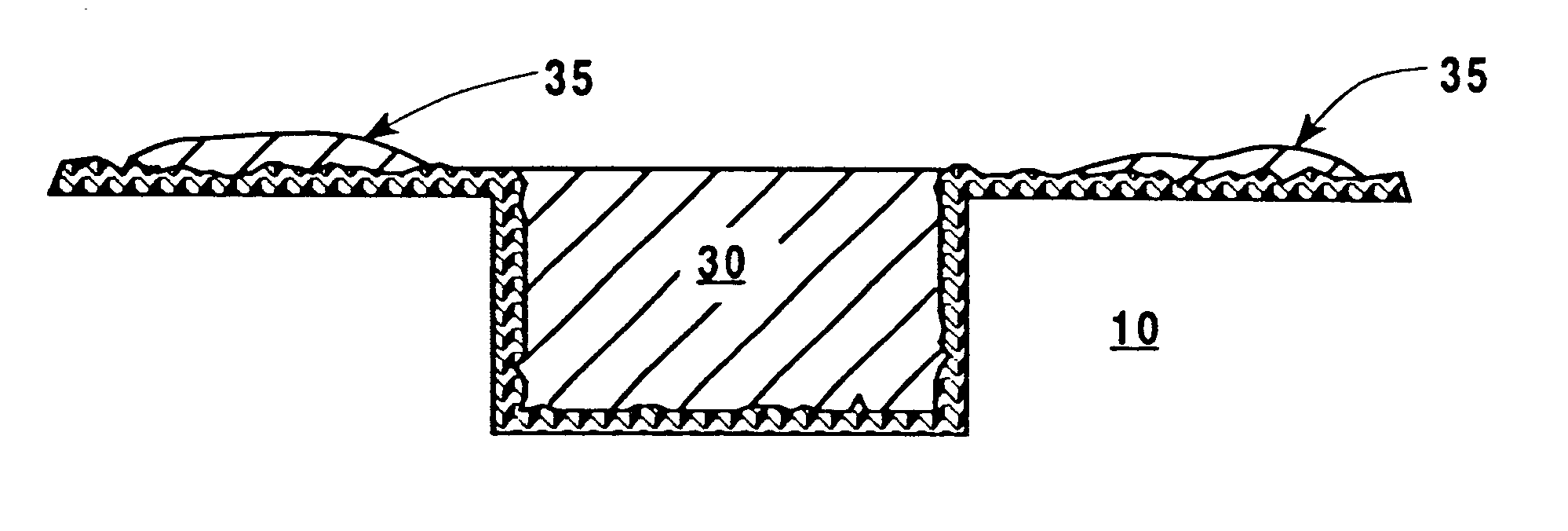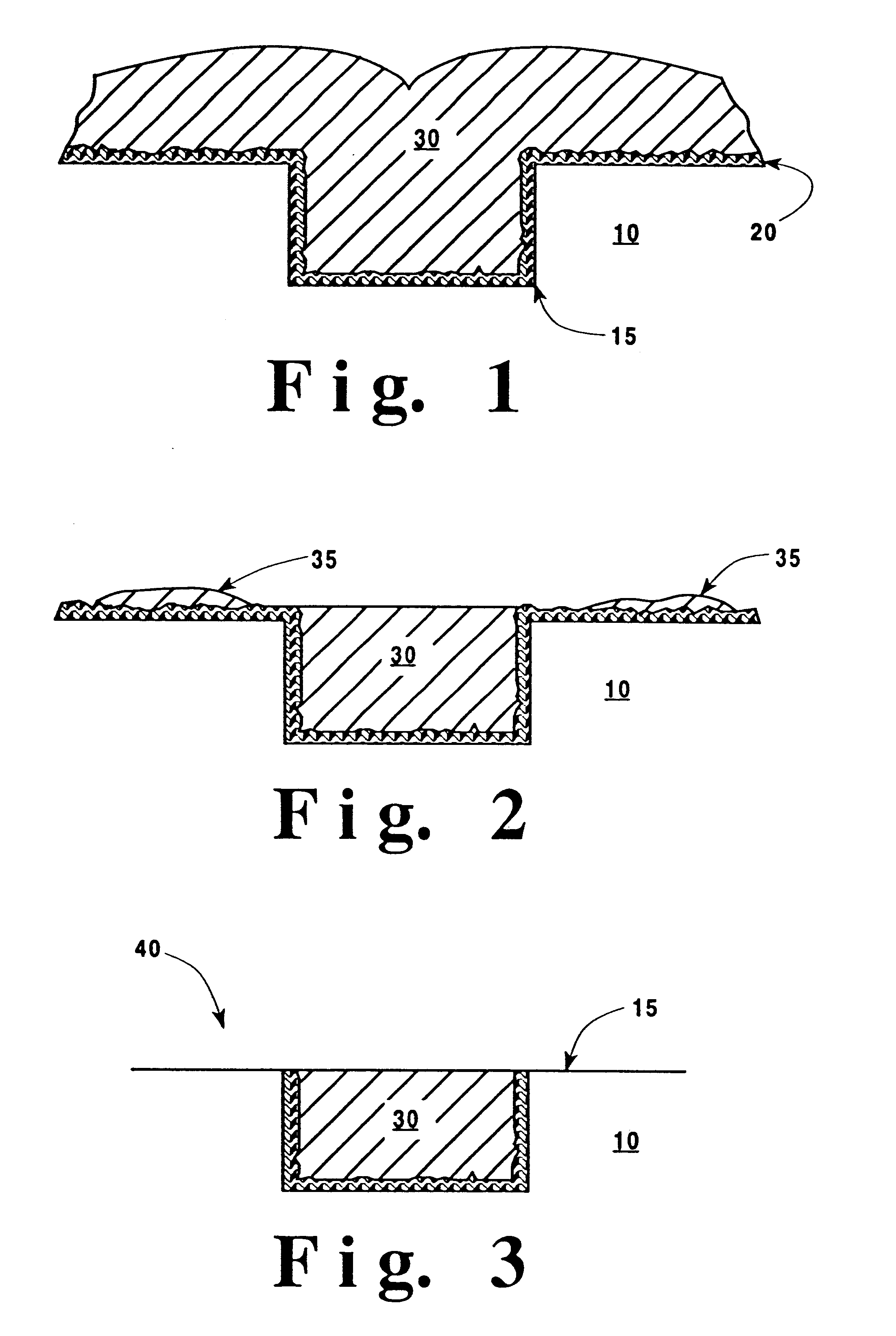Method to prevent leaving residual metal in CMP process of metal interconnect
a technology of metal interconnection and residual metal, which is applied in the field of composition and removal of metal layers, can solve the problems of shorts in the semiconductor device, premature device failure, shorts in the device, etc., and achieve the effect of effectively removing metal residues
- Summary
- Abstract
- Description
- Claims
- Application Information
AI Technical Summary
Benefits of technology
Problems solved by technology
Method used
Image
Examples
Embodiment Construction
)
In describing the preferred embodiment of the present invention, reference will be made herein to FIGS. 1-6 of the drawings in which like numerals refer to like features of the invention. Features of the invention are not necessarily shown to scale in the drawings.
The present invention provides an enhanced CMP methodology utilizing a first slurry to planarize the metallization wherein a metal residue may remain, and a second slurry which removes the liner material. The advantage lies in that the second slurry is selective to both the liner material and any metal residue remaining. The methodology of the present invention also significantly reduces scratching of the underlying dielectric layer.
In FIG. 1 is shown a cross-sectional view of a portion of an interconnect structure having a dielectric layer 10 in which a via 15 has been etched. Dielectric layer 10 may comprise any appropriate type of insulating material known in the art such as silicon dioxide, and different types of dope...
PUM
| Property | Measurement | Unit |
|---|---|---|
| Dielectric polarization enthalpy | aaaaa | aaaaa |
| Electrical resistance | aaaaa | aaaaa |
| Affinity | aaaaa | aaaaa |
Abstract
Description
Claims
Application Information
 Login to View More
Login to View More - R&D
- Intellectual Property
- Life Sciences
- Materials
- Tech Scout
- Unparalleled Data Quality
- Higher Quality Content
- 60% Fewer Hallucinations
Browse by: Latest US Patents, China's latest patents, Technical Efficacy Thesaurus, Application Domain, Technology Topic, Popular Technical Reports.
© 2025 PatSnap. All rights reserved.Legal|Privacy policy|Modern Slavery Act Transparency Statement|Sitemap|About US| Contact US: help@patsnap.com



